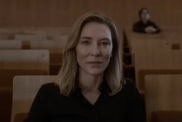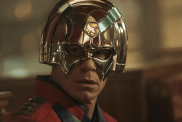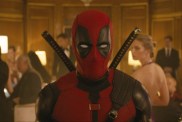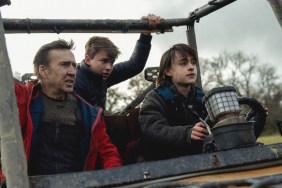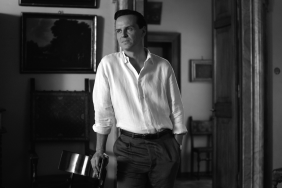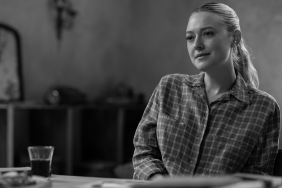“Hopefully, when people hear that a new LAIKA film is coming out, they’re excited,” smiles LAIKA President and CEO Travis Knight, “But they’re not quite sure what they’re going to get.”
The Portland-based stop motion production company has been more than living up to that ideal ever since the release of their first feature, Coraline, in 2009. Critically acclaimed and nominated for an Academy Award, Coraline was followed by the also-Oscar-nominated ParaNorman in 2012.
“‘Coraline’ was kind of like a modern day fairytale,” Knight recalls, “and ‘ParaNorman’ had kind of an ’80s aesthetic and was a coming-of-age Amblin style adventure. They were both contemporary stories that had the glaze of the supernatural on them? We absolutely wanted to avoid having a kind of ‘house style’ to either the stories we tell or visually, how we execute on that.”
Of course, Knight himself is one of the key elements that sets LAIKA apart. Despite being the head of the company, Knight considers himself first and foremost an animator and can usually be found laboring away at the painstaking frame-by-frame process.
“I do as much as I can,” he smiles. “I’ve done quite a bit of this film. Two really sizable chunks that I’ve animated start to finish as well as kind of bits and pieces here and there. It’s a key aspect of what I do. …It’s why I got involved in this area to begin with. It’s something that I absolutely love and have since my childhood. Moving forward, it’s something that I never, ever want to lose, the direct hand connection to the art. It’s something that I continue to do and, moving forward, I can’t imagine ever giving it up entirely.”
The Boxtrolls represents a number of firsts for LAIKA and ComingSoon.net had the privilege of seeing some of them firsthand when we visited the studio during production late last year. There, the totality of the new film was shot amid 51 different scaled-down stop-motion sets, many of which film in unison. An animator spends roughly a week for about 3.7 seconds of footage.
“[LAIKA is template=’galleryview’]–> this vast brain trust of all of this experience,” explains Graham Annable, who co-directs The Boxtrolls with Anthony Stacchi. “It’s all together to make these shows continuously and it’s truly amazing.”
Because stop-motion features are so rare, teams of talented artists normally have to be pulled together for any given production. With The Boxtrolls, LAIKA is edging closer to its goal of shooting one feature a year, meaning that the artists tied to it can continue on to the next project when they’re done.
“Because we’ve gone from film to film,” says Knight, “we can build on the innovations that we do with each film. It allows us to do things that, just a couple of years ago, weren’t possible.”
The key isn’t just in technical innovations, however. LAIKA is keen on finding the perfect stories to match their stylish visuals. In the case of The Boxtrolls, they’re adapting Alan Snow’s book “Here Be Monsters!”

“I read Alan’s book about a decade ago,” recalls Knight. “This thing has been gestating for quite a long time. When I read Alan’s book, I was just spellbound. It was this really strange thing. It was a very unique invention, but it also had whispers of some of the very best of children’s literature. It reminded me of a lot of children’s tales that I grew up loving. Things by Roald Dahl. It had this sort of Dickensian aesthetic intertwined with Monty Python.”
“Alan’s book has a whole bunch of different creatures that live underground as well as fantastical creatures that live above ground,” says Stacchi. “We always knew that we were going to focus on the Boxtroll characters, because they’re kind of the most unique creation in the story.”
The Boxtrolls of the film live beneath the streets of the fictional (and cheese-loving) town of Cheesebridge and are named after their various boxes. Shoe is one of the main characters, as are Fish, Sparky, Knickers, Fragile, Bucket and so on. Then there’s Eggs (Isaac Hempstead-Wright), a human boy who has been raised by the Boxtrolls. He begins to learn more about the surface world when the villainous Archibald Snatcher (Ben Kingsley) decides that he’s going to take advantage of peoples’ fears and hatches a plot to take down the Boxtrolls once and for all.
“[Snatcher template=’galleryview’]–> is one rung above a Boxtroll and trying to climb to the top of the hill and join the company of the aristocrats,” explains Annable. “Of course, he’s using the elimination of all the Boxtrolls and what a great service this will be to the town because they’re such horrible monsters, to gain himself, what in our world is represented by wearing a white hat. You join this society of aristocrats by wearing a white hat and getting rid of that ratty old red hat.”
Snatcher surrounds himself with a vile crew of henchman. They include Richard Ayoade, Mr. Pickles, Nick Frost’s Mr. Trout and Tracy Morgan’s Mr. Gristle.
“We had taken Trout and Pickles a certain way,” says Annable, “down a certain path, where they’re the minions of Snatcher, but they’re likable. [The cast template=’galleryview’]–> brought such a level of innocence and naivety to the characters that we kind of changed their arcs a little bit, because of that recording session.”
Not all surface dwellers are nasty, however, and Eggs finds himself pulled into high society thanks to a girl named Winifred (Elle Fanning).
“It’s a coming-of-age movie about an 11-year-old boy,” says Stacchi, “and finding his place in the world. Family is a huge part of that and he’s been raised by these monsters who society says are really bad, so it’s all in there. You’re being judged by where you come from, who your family is.”
“We don’t come up with morals or anything like that,” adds Annable. “We don’t teach people lessons, but we investigate themes and then it’s clear, he’s a boy raised underground by monsters who goes above ground searching for who he is and what happened to his family and there’s a little girl who befriends him, who has trouble in her relationship with her father, so there’s a lot of stuff about families in there.”
LAIKA has always been at the forefront of 3D printer technology and The Boxtrolls is no exception. Because the technology has progressed as far as it has, the new film is embracing a kind of animation style that just wasn’t possible a few years ago. ParaNorman made use of sculpted faces, usually held to the models by magnets, allowing animators to easily swap out character mouths. The Boxtrolls, now has animators swapping out whole faces, meaning that stop-motion, for the first time, can embrace the “squash and stretch” of 2D animation rather than the often-rigid normal stop-motion route.

“It’s not just about capturing reality,” says Knight. “It’s about bringing a kind of artistic lens to reality. We had these really insane paint jobs. If you look at some of the designs, you wouldn’t think they would work in motion, but they’re beautiful? Every time out, we push for better expressivity in the characters’ faces. We got it on this one and we’re going to push it even further on the next one.”
Despite the incredible possibilities 3D printers represent, many of The Boxtrolls‘ 20,000 props are still made by hand. Some of them are tricky to replicate just because of the scale (the smallest being a tiny needle with a piece of super-fine thread), while others are just so bizarre they have to be created from scratch. Stacchi recalls one scene where a miniature paper mache mask was required for the Eggs model.
“He has to wear a paper mache mask,” says the director, “but you have to be able to see his face through the mask. He has to be animatable. So we’re sitting there in the meeting and somebody goes, ‘Oh, Matt Brooks does that!’ ‘Matt Brooks has done something in the past which makes you think that he’ll be able to…?’ ‘No, he’s actually does, He makes miniature paper mache masks!'”
“Within a half hour, he was in the meeting rooms holding a perfectly miniaturized paper mache mask,” laughs Annable.
It’s not just the character designs that LAIKA hopes will set The Boxtrolls apart. Knight promises that the camera itself is something very new and different.
“It does not feel like it’s on a tripod,” he explains. “It feels like it’s a real camera. There’s a real dynamism in the camera movement that we really haven’t seen in stop-motion before. It’s one of the things that I love about this community of artists. Within this building is a kind of living, breathing anachronism, because we have over a century of filmmaking techniques working together and all living together. Techniques that even predate films. Techniques from the theater. From the stage. Whatever tool or technique is the best way to make our films, we make up this big gumbo bowl of ideas. It’s one of the reasons our films look and feel different from other animated films.”
In the end, though, LAIKA’s ultimate goal isn’t so much to deliver spectacle as it is to deliver solid storytelling.
“The reality of it is that the process of creating art is inextricable from the art itself,” says Knight. “There is something unique about creating stop motion. It’s a very unique process and I think that is, in the end, what give the whole thing its kind of soul. The mind of an artist and the hands of an artist are bringing something to life in a very direct, kind of personal way. I think that that can’t help but inform the shape that these things ultimately take. But in the end, we’re storytellers. You want to connect with the audience on that level. Once an audience gets in there in the cinema, that screen is going to come on and hopefully all this stuff comes on. Then they settle into the story and start connecting with the characters. The hope is that the technique and everything else just fades into the background and they’re not even thinking about it.”
Find out for yourself when The Boxtrolls hits theaters September 26. In the meantime, we’ve updated our gallery with several new behind-the-scenes stills. Check them all out in the viewer below!
The Boxtrolls
-
The Boxtrolls

-
The Boxtrolls

-
The Boxtrolls

-
The Boxtrolls

-
The Boxtrolls

-
The Boxtrolls

-
The Boxtrolls

-
The Boxtrolls

-
The Boxtrolls

-
The Boxtrolls

-
The Boxtrolls

-
The Boxtrolls

-
The Boxtrolls

-
The Boxtrolls

-
The Boxtrolls

-
The Boxtrolls

-
The Boxtrolls

-
The Boxtrolls

-
The Boxtrolls

-
The Boxtrolls

-
The Boxtrolls

-
The Boxtrolls

-
The Boxtrolls

-
The Boxtrolls

-
The Boxtrolls

-
The Boxtrolls

-
The Boxtrolls

-
The Boxtrolls

-
The Boxtrolls



